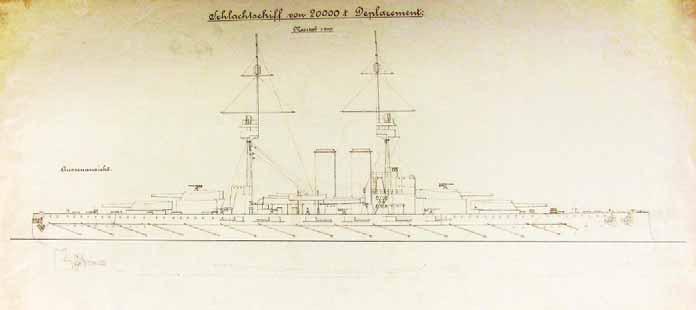ued the occupation of Northern Albania. In October 1913, the Dual Monarchy decided on a firm stand against Serbia over Albania. On 18 October, Austria-Hungary issued an ultimatum to Serbia on its own without consulting the Great Powers demanding that Serbian troops be withdrawn within eight days from the Northern Albanian territories. When the word of the ultimatum reached Pola, Haus was not very happy. He knew that it was a rather unfavorable moment for mobilizing the Navy, because two of the most modern battleships were under repair. The main steam pipe of the Viribus Unitis was under repair and the ship could not have been put in service again for two weeks. The other battleship temporarily unserviceable was the Zrínyi as the elevation gears of her gun turrets were under repair. It seemed that she would be ready again only after 10 November.435 Fortunately the Albanian Crisis passed, as on 25 October Serbian troops were withdrawn from Albania. The last peacetime tour of the battleships was made between 30 March and 7 June 1914. The Viribus Unitis, Tegetthoff and Zrínyi visited Smyrna, Beirut, Alexandria and La Valetta. Between 4 and 18 May the British battlecruisers Indomitable and Inflexible visited Trieste, the Austro-Hungarian battleships returned this visit at La Valetta in Malta between 22 and 28 May. The reception of the Austro-Hungarian units was very cordial by the British. No one could foresee that two months later the two navies would be enemies. In June 1914, Franz Ferdinand took a part of his last voyage on board the Viribus Unitis. On 24 June, he boarded the Viribus Unitis at Trieste and sailed to the mouth of the Narenta River. There he transferred to the yacht Dalmat, which steamed upstream to Metković, from where he travelled by train to Sarajevo. After the Sarajevo Assassination, the dead bodies of the Heir of the Throne and his consort were transported to Metković. In the mouth of the Narenta River the two coffins were transferred from the Dalmat to the Viribus Unitis. Upon hearing the news of the assassination, Haus raced to the Narenta aboard the yacht Lacroma, escorted by the Tegetthoff, the scout cruiser Admiral Spaun and several torpedo boats, arriving in time to witness the transfer of the coffins. Thereafter, the entire squadron steamed slowly to the North along the Dalmatian coasts with flags lowered to half-mast, reaching Trieste at the evening hours of 1 July.
The “French War” The assassination of Franz Ferdinand was followed by a month of intense diplomatic activity called the July Crisis, which led to the general European war which had been predicted by many since the turn of the century. Unluckily, with the Sarajevo Assassination the strongest opponent of war in the Dual Monarchy was murdered. Franz Ferdinand in his last years gradually changed his belligerent views and realized that a great European war would cause the overthrow of such dynasties like the Habsburgs and Romanovs. In July among the most prominent leaders of the Dual Monarchy there were only a few, if any, who opposed a war with Serbia. The most potent possible opponents of a belligerent policy, the Heir of the Throne and the former Foreign Minister Alois Lexa von Aerenthal, were already dead. The others mostly viewed the Sarajevo Assassination as a divine opportunity to settle the Serbian question once for all, and a perfect casus belli, hoping that the European Powers were disgusted over the assassination enough to be sympathetic to any Austro-Hungarian action. They also underestimated the Russian threat. The only exception was the Hungarian Prime Minister István Tisza, who was realistic and who thought that the situation was unfavorable for a war against Serbia. On 7 July Tisza warned that any attack on Serbia would lead to an intervention by Russia and consequently to a world war. During the next two weeks Tisza was gradually persuaded, and he adopted the view that while the current situation was unfavorable for a war, the future situation would only be more unfavorable. The Chief of the Austro-Hungarian General Staff Franz Conrad von Hötzendorf had a very important role during the July Crisis. As Admiral Haus remained in Pola, his deputy, Vizeadmiral Karl Kailer von Kaltenfels represented the Navy in Vienna. When needed, Kailer joined Conrad in presenting the views of the armed forces in the common Council of Ministers, but no doubt Conrad played the lead role. On 7 July, Conrad was asked about the military balance and the Entente superiority. He answered that he did not know but he thought that the future changes would be not favorable for the Central Powers. He was also asked whether the armed forces of the Empire were prepared for a war or not. He answered yes they were prepared, while he knew well that the Army
— 124 —






























